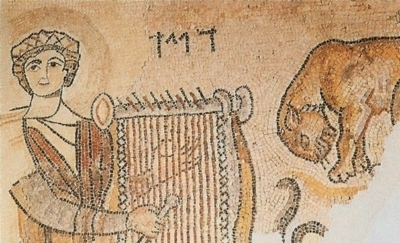Many Halachic ordinances in different areas are connected to the city of Gaza: with infections (of leprosy), with ordaining elders and trade with gentiles. These were determined according to the Jewish life in this city. These sources in Rabbinic literature served as proof for adjudicators who claimed that Gaza is part of the Land of Israel.
A House Affected by Leprosy in Gaza
The laws for an infected house are different from those for a person with leprosy or clothes infected with leprosy and are customary only in the Land of Israel: “When ye are come into the land of Canaan, which I give to you for a possession, and I put the plague of leprosy in a house of the land of your possession” (Leviticus 14: 34).
In the Tosefta tractate of Nega’im 6:1 it says the following:
“Rabbi Eliezer the son of Rabbi Tzadok said: ‘there was a place within the area of Gaza and it was called Leprous Ruins.” From this, Rabbi Ashturi HaParchi concluded that Gaza is within the Land of Israel, and so he said:
In this chapter discussing a rebellious son (Sanhedrin 71, a, and Tosefta Negaim 6 first halacha): “Rabbi Eliezer son of Rabbi Zadok said: There was a place within a Sabbath’s walk of Gaza, which was called the Leprous Ruins. And house leprosy is only in the Land of Israel as it is said ‘to you for a possession’.”
The Fair in Gaza
In the Yerushalmi Talmud tractate Avoda Zara 1:4 in the issue dealing with trade and negotiations in markets which had idol worship, the question arose regarding the fair in Gaza: “Rabbi Yitzhak son of Rabbi Nachman asked Rabbi Hanina: The fair in Gaza – what of it?” The Talmud in Avoda Zara 11b asks regarding what the Mishna had said: ” How far will it be from the market that is in the city? Rabbi Shimon Ben Lakish said, quoting Rabbi Hanina: ‘like Atulaza and Gaza’.” From here Rabbi Yaacov Imadin proves that Gaza is part of the Land of Israel since the laws of trade with idol worshippers are practiced there in accordance with the laws in Israel, and these were different from the customs practiced by those living abroad.
The Fowl in Gaza
The Talmud in the tractate of Shabbat describes a discussion between two Amoraim comparing the birds of Babylon to the birds of the Land of Israel.
“Rabbi Hiyya son of Abba and Rabbi Assi were sitting before Rabbi Yohanon, while Rabbi Yohanon was sitting and dozing. Now, Rabbi Hiyya son of Abba asked Rabbi Assi, why are the fowls in Babylonia fat? Go to the wilderness of Gaza, he replied, and I will show you fatter ones…” (Shabbat 145b)
Rashi comments there:
“Why are the fowls in Babylonia fat – fatter than the ones in Israel. Kelech-means lech lecha (go for you) in a shortened version. To the wilderness of Gaza – and it is in the Land of Israel.”
From the comparison between the fowls raised in Babylonia to those raised in Israel, one concluded that those in the Gaza wilderness are fatter than those in Babylonia. Rashi emphasizes that Gaza is part of the Land of Israel.
Based on an article by Rabbi Yehuda Zoldan, Gaza in the Mishna and the Talmud, The Torah and the Land, part 7, Machon HaTorah VeHaretz publishing







